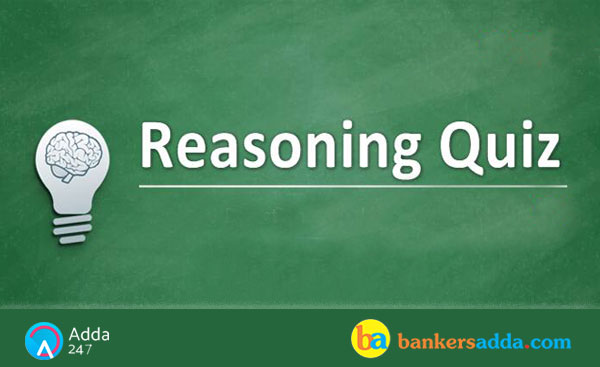
Directions (1-5): Study the following information carefully and answer the questions given below:
In a certain code language,
‘Ritu the Adarsh Naveen’ is written as ‘pa ch ga mo’,
‘Naveen Harsh Ram Shyam’ is written as ‘ta ha cu pa’,
‘Ritu the Roshan Naveen’ is written as ‘ga ch sh pa’
‘Ram Shyam Sam’ is written as ‘ha cu va’.
Q1. What may be the code for ‘the’?
Q2. Which of the following can be the code for ‘Sam Ritu Adarsh’?
Q3. ‘ha’ is the code for?
Q4. Which of the following is the code for ‘Adarsh’?
Q5. ‘Shyam Ritu the Ram’ can be coded as
Directions (6-10): In the following questions, the symbols $, @, %, & and # are used with the following meanings as illustrated below:
‘A $ B' means A is neither greater nor smaller than B
‘A @ B' means A is neither greater than nor equal to B
'A % B' means A is neither smaller than nor equal to B
‘A& B' means A is not smaller than B
‘A # B' means A is not greater than B
In each of the following questions, assuming the given statements to be true, find out which of the two conclusions I and II given below them is/are definitely true. Give answer
Q6. Statements: W&P, P %G, G @ I, I # N
Conclusions: I. N%G II. N # G
Q7. Statements: U @ D, D $ E, E % Y, Y& W
Conclusions: I. U @ E II. W @D
Q8. Statements: Z % N, N # K, K $ M, M @ R
Conclusions: I. M $ N II. M& N
Q9. Statements: V&D, D %T, K $ T, K # F
Conclusions: I. V% F II. V#F
Q10. Statements: S $ Q, Q @ B, B &K, K # W
Conclusions: I. W@K II. S # B
Directions: (11-15): Study the following information carefully and answer the questions given below:
There are eight people P, Q, R, S, T, U, V, W sitting around a circular table. Only three of them are facing inside and rest are facing outside. Q, who is not an immediate neighbour of W, sits second to the left of P. W sits third to the right of R. U is not facing inside. V sits second to the left of U. There are 3 people sitting between P and R. S is not an immediate neighbour of P and Q. T sits opposite to V. V is not an immediate neighbour of Q. S and W are facing the same direction as R.
Q11. Who sits opposite to S?
Q12. Who sits second to the left of R?
Q13. If U and T interchange their positions, then who sits to the immediate left of T?
Q14. Four of the following five are alike in a certain way and so form a group. Find the one who does not belong to that group?
Q15. What is the position of Q with respect to R?





 GA Capsule for SBI Clerk Mains 2025, Dow...
GA Capsule for SBI Clerk Mains 2025, Dow...
 The Hindu Review October 2022: Download ...
The Hindu Review October 2022: Download ...
 30 Days Study Plan to Crack SBI Clerk 20...
30 Days Study Plan to Crack SBI Clerk 20...





